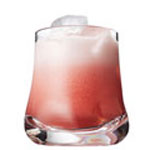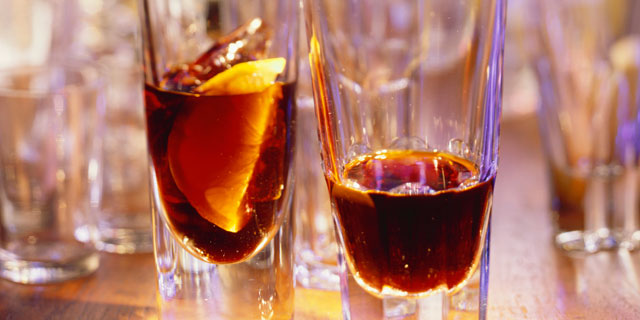If you’ve ever made a Pisco Sour, you know that one of the signature ingredients is Angostura Bitters. But have you ever stopped and wondered what bitters are? Sure, they make you pucker up, but what are they made of, how are they used, and how do they mix up in cocktails? Read on for your intro guide to bitters.
In short, bitters are an alcohol-based cocktail ingredient infused with botanicals that pack a wallop of flavor. Some of the plants used for flavoring bitters—tree bark, roots, seeds, and leaves—are naturally bitter or bittersweet, hence the name.
Rest assured, adding bitters to a cocktail will not result in a pinched expression and the reflexive urge to spit. Think of bitters as salt, they're a seasoning used to add complexity to a drink or to balance out sugary sweet cocktail recipes.
“Bitters are an ingredient I can’t live without,” says Gavin Steiner, bar manager at Día de Campo, a hip new Mexican eatery in Hermosa Beach, California. “They are a lot of fun because you can add [subtle] flavors and aromas to just about any drink.”
Bitters began as a medicinal tonic, with some ancient civilizations using them to treat common ailments. In the 1830s, Haitian apothecary Antoine Amedie Peychaud started the bitters craze in New Orleans. And Peychaud’s Bitters are still around today, although they’re no longer touted as a cure-all. In fact, the U.S. government put the kibosh on marketing bitters as medicine in 1906 with the Pure Food and Drug Act.
Today, Angostura Bitters may enjoy the highest name recognition, but a trip to your local wine and spirits shop will reveal that bitters come in scores of flavors and aromas. Grapefruit, orange, and lemon bitters fight for space with cherry, rhubarb, and celery bitters. And there are many, many more.
Cinnamon, clove, and ginger bitters can add a spicy edge to a cocktail, while chocolate, lavender, and peppermint bitters deliver crave-worthy aromas. If you like it hot, you can find bitters infused with curry, cayenne pepper, and habanero chili.
There are even bitters made from organic ingredients. “Sun Liquor in Seattle produces [bitters] from organic, non-GMO grain and herbs,” says Adnen Marouani, owner of Barsha Wines & Spirits in Manhattan Beach, California.
Next, how best to enjoy bitters… [pagebreak]
A good rule of thumb when using bitters is to treat them like a food seasoning. “Some ingredients used in cooking can be too assertive or robust and can really take over the flavor,” Steiner notes. Most cocktail recipes call for just a few drops of bitters.
Like salt, you may choose to add more or less depending on your palate, but don't overdo it. You can always add more but you can't skim it out. Just like cooking with spices, start with a few different bitters and mix them into classic cocktails to see which flavors you like, what you taste, and what you'd like to pair them with.
Perhaps try a chocolate bitter to add depth to a bold bourbon, a spicy bitter with tequila, a fruity bitter to balance out smoky mezcal. It's all about trial and error and your personal preference.
You can find bitters online or at your neighborhood liquor store. Bar Keeper in Los Angeles’s Silver Lake neighborhood claims to stock more than 150 different types of bitters. Adds Steiner, “Bitters now come in such a wide array of flavors that you can really mix, match, and complement other ingredients and spirits in a cocktail. I just love them.”
Here's one sweet and sour recipe to help you get started.

- 1 ounce fresh lemon juice
- 2 teaspoons your favorite jam
- 1 1/2 ounces Monkey Shoulder Whisky
- 1/2 ounce simply syrup
- 1/2 ounce soda water
- 1 dash orange bitters


![Making Mealtime Matter with La Familia: Easy Sofrito [Video]](https://thelatinkitchen.com/wp-content/uploads/2015/10/sofrito-shutterstock__0-500x383.jpg)
![Easy Latin Smoothies: Goji Berry Smoothie [Video]](https://thelatinkitchen.com/wp-content/uploads/2015/12/goji_berry-shutterstock_-500x383.jpg)
















![Fun and Fast Recipes: Fiesta Cabbage Salad [Video]](https://thelatinkitchen.com/wp-content/uploads/2015/11/fiesta_cabbage_slaw-shutterstock_-500x383.jpg)









